This was published 5 years ago
Guide to Berlin's top neighbourhoods: The four distinct areas that make Berlin Europe's coolest city
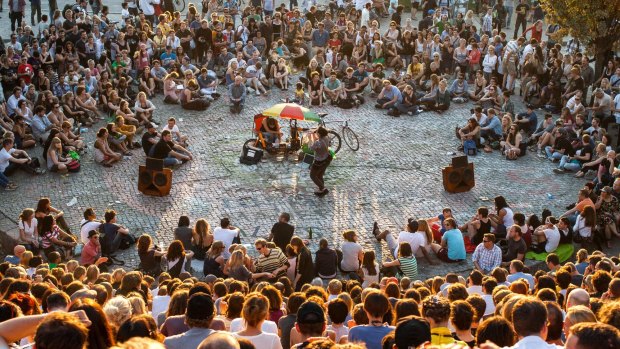
People at Mauerpark watching the Sundays free Karaoke.Credit: Shutterstock
Berlin is the capital of cool. Other cities have pockets of buzzing nightlife and alternative cultures, hipster neighbourhoods and arty enclaves, but in Berlin the whole city has turned bohemian. Everyone, it seems, is micro-farming, getting tattoos, tagging bridges with outlandish graffiti, strumming on guitars in parks or raving to techno music.
Berliners are typically young, immigrant and idealistic. Berlin is young, too, at least in appearance. You won't find the typical European delights of castles and cobbled squares and (with the exception of many outstanding museums) that means time off from sightseeing. That's good news, because there's no better city for street life, contemporary culture and simply soaking up the vibe.
BARN QUARTER

Colorful houses at Prenzlauer Berg.Credit: Shutterstock
Barn Quarter (Scheunenviertel) is named for the 17th-century cattle pens at the market that stood just beyond the city walls at now very central Alexanderplatz. This later became the Jewish area, of which only remnants remain, including an old cemetery (though the tombstones are all gone) and the flamboyantly golden, Moorish-style New Synagogue, restored in the 1990s.
This historic footprint is evident in the tangled layout of narrow streets. Later still, as part of East Berlin, the courtyard buildings of Barn Quarter became tenements for blue-collar workers. You can still get a flavour of this time in graffiti-covered alleyways lined by peeling apartments and bare-bones cafes frequented by punk students. Much of Barn Quarter, though, has been restored and taken over by fashion boutiques, restaurants, nightclubs, hip hotels and art galleries. It's now the quintessential New Berlin.
The best of the trendy new incarnation is found in Hackenschen Hofe, which crams in more than 100 cafes, boutiques and restaurants in a series of Art Nouveau courtyards. Everyone, from bearded bloggers and tattooed artists to well-coiffed bureaucrats, mingles here for evening drinks or to see the circus-cabaret hybrid acts of the brilliant Chamaeleon theatre. The raffish action spills in summertime under the railway arches and into surrounding squares at the S-Bahn train station.
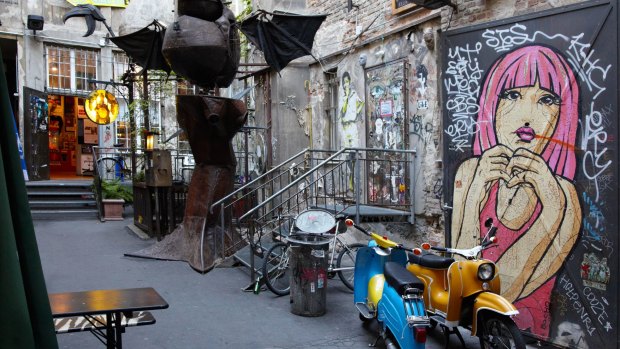
A typical grunge art court in Berlin.
All around this area, indie fashion shops and art galleries provide a refreshing alternative to big chains. Linienstrasse and Auguststrasse are great for art, as is Kunsthaus Tacheles, a former department store now taken over by a host of anti-establishment studios. For the most avant-garde fashion designers, head along Mulackstrasse and Almstadtstrasse.
PRENZLAUER BERG
Some Barn District flavour spills into neighbouring Prenzlauer Berg, a little further from the city centre. It, too, has Jewish history and a better preserved Jewish cemetery on Schonhauser Allee, sun-dappled under chestnut trees. It too has pockets of shabbiness, a youthful and arty vibe, and newfound gentrification.
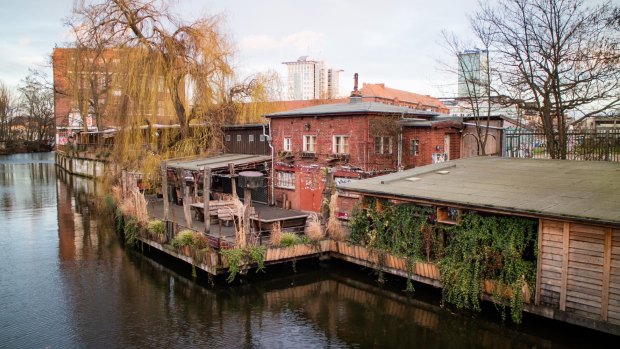
The Flutgraben Canal with clubs and restaurants along it, in the Kreuzberg area.Credit: Shutterstock
Prenzlauer Berg, however, suffered less from World War II bomb damage and has wider streets lined with handsome late 19th-century buildings, many now protected monuments. It has a more authentic claim to being alternative, since even as part of East Berlin it was radical and dissident. When the Berlin Wall came down, squatters took over. Now you're more likely to run into hot-desking executives, especially around trendy Kollwitzplatz.
This is a great district for walking or cycling, with pleasing architecture, interesting boutique shopping, abundant multi-ethnic eateries (especially around Kollwitzplatz, Helmholtzplatz and Oderbergerstrasse) and good nightlife centred on Eberswalder Strasse. It's the place of the moment for hip young Berliners.
A top spot is Kulturbrauerei, a huge red-brick brewery complex turned cultural centre where you'll find restaurants, nightclubs, a cinema and museum to East Berlin life. Nearby is Prater Garten, one of the city's oldest beer gardens, where in summer you can sit under light-strung trees and enjoy Weissbier and pretzels.
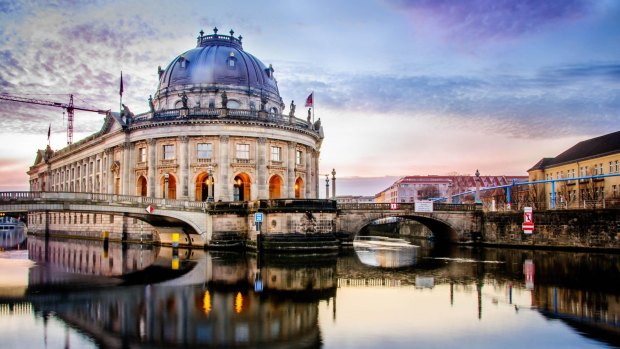
Museums Island, Berlin.Credit: Shutterstock
On the district's western edge, Mauerpark (Wall Park, formed from a section of the "death strip" that ran behind the Berlin Wall) encapsulates alternative Berlin. It isn't pretty but has a fabulous summertime vibe thanks to its Sunday flea market, public graffiti wall and eruptions of outdoor karaoke. Locals barbecue sausages as performers juggle.
KREUZBERG
In the bad old days, Kreuzberg was surrounded on three sides by the Berlin Wall and was therefore an undesirable area of cheap housing. Immigrants and alternative folk moved in and never left. Kreuzberg is young and gritty, less gentrified and more edgy than Prenzlauer Berg. Veiled women mingle with Goths and nose-studded students. Buildings are scribbled with graffiti, some from big-name street artists. The most famous works are at East Side Gallery, a remnant chunk of Berlin Wall.
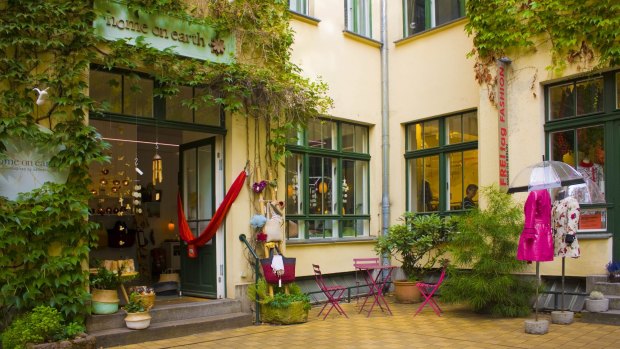
Hacke's Courtyards (Hackesche Hofe) - series of courtyards joined together to one large complex with multiple uses.Credit: Shutterstock
There's a great creative vibe here. Street musicians perform, start-ups cluster around Moritzplatz, and artists share creative spaces such as the converted factory Aufbau Haus. There are art galleries and nightclubs everywhere, including Berhain, the world's best techno club. Gentrification may be inevitable. The coffee roasters have arrived, though there's still a liking for the daggy Berlin snack Currywurst, accompanied by chips slathered in ketchup and mayonnaise.
You can eat well, too, thanks to the immigrant community. At Little Istanbul around Kottbusser Tor, you'll find terrific Turkish eateries such as Adana Grillhaus, Hasir and Doyum Restaurant, where grills sizzle with skewered meats. Twice a week the canal side erupts in the city's largest Turkish market, scented with hot sesame rolls and kebabs turning on spits.
The highlight of Kreuzberg eating is Markthalle Neun, a beautifully restored early-20th-century market hall that showcases the district's diverse flavours and creative flair, and where you can work your way through focaccia and smoked fish, jerk chicken and Sicilian pasta.
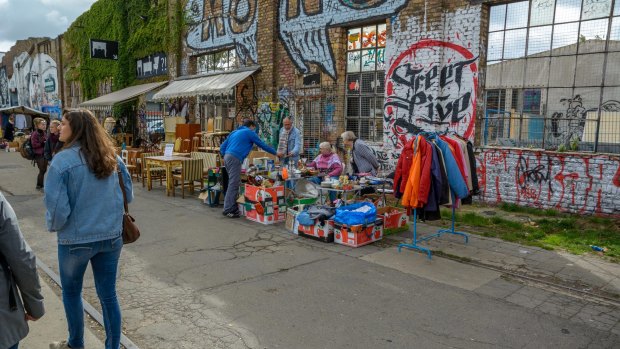
Flee market in Friedrichshain, Kreuzberg.
NIKOLAI QUARTER
If you need to unwind from the excitement of the alternative, this quarter on the Spree River in central Berlin is the closest thing this bombed-flat city has to an old town. Berlin got its start here 800 years ago. Despite its current 16th-century appearance, almost the entire quarter was meticulously reconstructed by the East German government in the 1980s, using historical records. It's most charming in the evening, when low street lighting shines on cobblestones, the church spire looms and chatter leaks from restaurant windows.
The late-Gothic Church of St Nicholas houses scraps of medieval Berlin life, plus a more interesting display of photographs showing the city's staggering wartime damage. Knoblauch House, former home of a wealthy trading family, is decorated and furnished in the Biedermeier (early 19th-century) style.
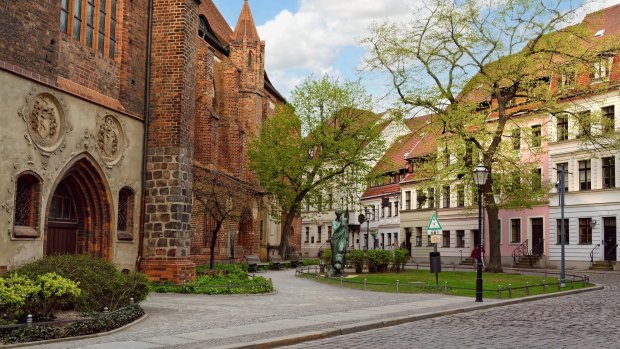
Nikolaiviertel (Nicholas quarter), a picturesque old district in the central part of Berlin, Germany.Credit: Shutterstock
Streets lined with gabled houses provide an almost village-like atmosphere, despite the giant TV Tower looming in the background, creating an unexpected pocket of old-world charm. Tourists and locals come for Nikolai's antiques shops, pubs and traditional eateries such as Zur Gerichtslaube, which has 13th-century foundations and recreated brick-vaulted ceilings that will make you feel like a baron as you tuck into roast pork with spiced cabbage, or a platter of Prussian sausages.
Nearby Brauhaus Georgbraeu is shiny with copper beer vats and serves up a light, golden house-beer in giant tankards. It sits on a little square along the river graced with a statue of St George spearing a modest, lizard-like dragon.
CENTRE OF ATTENTION
Central Berlin is part of Mitte (middle) district. The area languished in the Cold War era when it was divided by the Berlin Wall. There are short remnants of the wall in Potsdamer Platz and (along with a watchtower) at the Berlin Wall Memorial. A double line of pavement markers shows the wall's former locations. It ran around three sides of Mitte and right behind the Brandenburg Gate, now the symbol of reunited Germany.
For those intent on traditional sightseeing, Mitte is home to most of Berlin's notable landmarks, such as Checkpoint Charlie, the TV Tower, the powerful Memorial to the Murdered Jews of Europe and the glass-domed Reichstag, Germany's parliament. Its loveliest square is Gendarmenmarkt, framed by a concert hall and two cathedrals. Museum Island in the Spree River brings together one of the world's great collections of art and antiquities.
TRIP NOTES
The writer travelled as a guest of the German National Tourist Office and Visit Berlin.
MORE
FLY
Etihad flies from Sydney and Melbourne to Abu Dhabi with onward connections to Berlin via Düsseldorf. See etihad.com
TOUR
Berlin on Bike! has a great 3½-hour cycle through alternative districts, and also does city highlights and Berlin Wall tours. See berlinonbike.de Aussie-run Fork & Walk Tours offers food tours in eclectic Kreuzberg district. See forkandwalktoursberlin.com
STAY
Lux Eleven Berlin-Mitte has big rooms – almost designer apartments – with kitchenettes and sitting areas, and is well located in Mitte. Superior Rooms start from €109. See lux-eleven.com
Sign up for the Traveller Deals newsletter
Get exclusive travel deals delivered straight to your inbox. Sign up now.